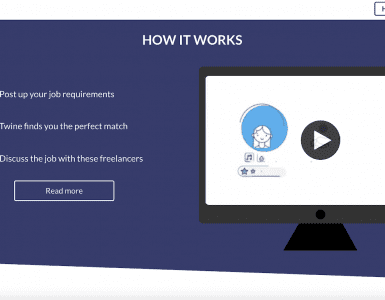Knowing when a freelancer becomes a permalancer can be a difficult thing to judge and it’s important that you don’t make mistaken assumptions and get punished or accidentally punish the person you’ve hired.
To help clarify things for you, here’s our guide to make sure you’re clear on the differences between freelance and permalance work and when you should change the legal working relationship status.
Here are the most important differences between a freelancer and a permalancer:
- Freelancers complete a piece of work in exchange for a fee, whereas permalancers have a salary with a contract of service.
- Freelancers don’t get any sickness pay, insurance or pension contributions.
- Freelancers can choose the hours they work and don’t have to work in a particular location, such as an office.
- Freelancers can work for more than one person simultaneously.
- Freelancers have to provide their own tools and equipment to complete the work.
- Freelancers are ultimately responsible for the success or failure of the business.
- Permalancers have to submit regular performance reports to their.


There are subtle differences in legal status between freelancers and permalancers, according to the Government guidelines of certain countries. Here are the most common:
United Kingdom Permalancer Status
In the UK if you’re on PAYE (Pay As You Earn system) then you’re an employee. If you’re exempt from PAYE and have to do your own taxes then you’re a freelancer. To check if someone’s exempt from PAYE then here’s the Government guidelines:
- they’re in business for themselves, are responsible for the success or failure of their business and can make a loss or a profit
- they can decide what work they do and when, where or how to do it
- they can hire someone else to do the work
- they’re responsible for fixing any unsatisfactory work in their own time
- their employer agrees a fixed price for their work – it doesn’t depend on how long the job takes to finish
- they use their own money to buy business assets, cover running costs, and provide tools and equipment for their work
- they can work for more than one client
(Source: Gov.UK Self Employed contractor status.)

United States Permalancer Status
In the US, the status of a freelancer is broadly similar to the UK, but is divided into three categories:
- Behavioural: Does the company control or have the right to control what the worker does and how the worker does his or her job?
- Financial: Are the business aspects of the worker’s job controlled by the payer? (these include things like how worker is paid, whether expenses are reimbursed, who provides tools/supplies, etc.)
- Type of Relationship: Are there written contracts or employee type benefits (i.e. pension plan, insurance, vacation pay, etc.)? Will the relationship continue and is the work performed a key aspect of the business?
(Source: IRS – Independent Contractor Status)
If you’re still unclear about a person’s freelancer status in the US, then you should fill in a SS8 Form and send it to the IRS.
To check the legal status of freelancers in other countries, go to the respective Government website and look for the self employment status guidelines.
If you have any other questions then please leave them in the comments below.







